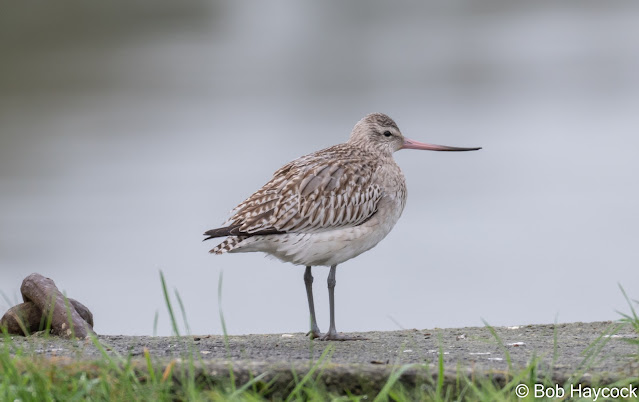We were away this weekend and our WeBS counts on the Carew/Cresswell and Daugleddau were delayed until this morning.
The usual variety of waterfowl in the Carew/Cresswell
section included lower numbers of wigeon and teal than last month (c.170 wigeon
cf. 300 in October and c.120 teal cf. 190 in October). 75 shelduck were present which was an increase
from very low numbers in October.
It seemed possible from calls heard on the Carew River at
first light that a large flock of feral geese might have roosted overnight there,
or perhaps had just flown in. They included 95 Canada geese and 215 greylags.
This was the largest greylag total we have recorded on the Carew River to date during
a WeBS count there.
52 oystercatchers were roosting at a favourite spot, including orange “smudgy” 58 left leg that was ringed at the Gann by Paddy Jenks and Michael Sherman in March 2018. This morning it was roosting within just a few inches of where it was photographed at roost with other oystercatchers last January.
It was nice to
see a bar-tailed godwit roosting with them – this being one of the less common
waders in Carew/Cresswell system.
Around 50+ redshanks and 3 greenshanks were roosting in expected usual places, plus 110 curlews and c.150 lapwings but dunlin were decidedly scarce. There were around 30 on the Daugleddau but none were seen at usual roost sites on the Carew River today.
Several herons and little egrets were dotted about along
various parts of the shore and a great egret (probably the one reported
last week) was feeding well up the Cresswell River this morning - telescope
view only and much too far away for a photo.
An immature male red-breasted merganser was feeding on Carew
Millpond trying to keep out of the way of large numbers of bathing gulls. The last one recorded here during a WeBS count was 13-years ago in November 2011.




